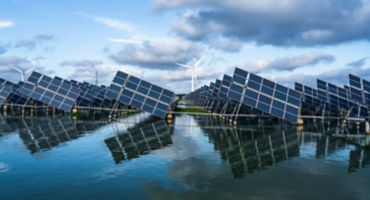In this two-part series, we examine the thematic investment opportunities arising from the world’s energy transition. Our first article in the series looked at the scope for investors to access opportunities within what we refer to as the clean energy transition opportunity set, such as companies involved with renewable power generation.
In this article, we explore another way for investors to think about the energy transition: one that looks at the critical role that the current generation of energy sources plays in a successful transition — a more nuanced approach that considers the opportunities, risks and inherent trade-offs.
Among our key conclusions:
- The energy transition is taking place amid a greater focus on energy security and affordability, leading to greater acknowledgement of the pivotal role that traditional energy industries play in meeting global energy needs while striving for sustainability.
- In the meantime, investors increasingly recognise that focusing solely on divestment may decarbonise investment portfolios without addressing the broader challenges associated with transitioning the economy away from fossil fuels.
- Active engagement can help drive meaningful change while facilitating the transition to the low-carbon economy.
- A holistic approach spanning both current and next-generation opportunities may be more aligned with the reality that the energy transition is a complex and multifaceted endeavour for which there is no one-size-fits-all solution.
What the energy trilemma means for the energy transition
Demand for energy is increasing, driven by the megatrends of population growth, urbanisation and higher standards of living. Meanwhile, energy markets have experienced an increased level of volatility.
The European energy crisis of 2022 has served as a powerful reminder of the importance of energy security and affordability, helping to drive recognition that renewables are more likely to offset incremental additional demand in the medium term, rather than displace existing power generation.
The focus on each of the three often conflicting challenges — energy security, affordability and decarbonisation — in the “energy trilemma” will continue to change over time. In 2020, we saw the era of “decarbonisation at all costs”. Decarbonisation was the focus of government and corporate sustainability agendas, which led to carbon-emitting industries (such as metals and energy) being less favoured by investors and the slowdown in investments contributing to a growing supply/demand imbalance. Today, given our view that higher energy volatility is here to stay, we believe energy security and affordability will remain in focus.
At the core of this shift is a renewed emphasis on active engagement as a way to work collaboratively with companies and stakeholders towards long-term change, rather than simply divesting from certain sectors, which may decarbonise investment portfolios without addressing the broader challenges associated with transitioning the real economy away from fossil fuels.
This approach acknowledges the pivotal role that industries such as metals and oil and gas play in meeting global energy needs while striving for sustainability. Through bottom-up research, we seek to identify and invest in those companies with strong environmental and social performance, as well as a focus on decarbonisation.
Through our natural resources subtheme, we target the often-overlooked segments that we think are essential to the energy transition: traditional energy sources that can assist with the transition and undersupplied critical minerals. Paired with deep research and consistent engagement, we believe a thematic approach to the energy transition can offer a differentiated way for investors to access potential opportunities.
Where are the investment opportunities and risks?
In our view, investing in clean energy stocks is not the only way to support the energy transition. We see the role of traditional energy (hydrocarbons) as important in continuing to meet energy demand as the economy decarbonises, with data from the International Energy Agency (IEA) using projections to illustrate how critical decarbonising existing energy sources is to the energy transition (Figure 1).





















Trends and transformation distilled: Our 2024 outlook in brief
Our experts explore investment opportunities and risks for the year ahead.
Multiple authors